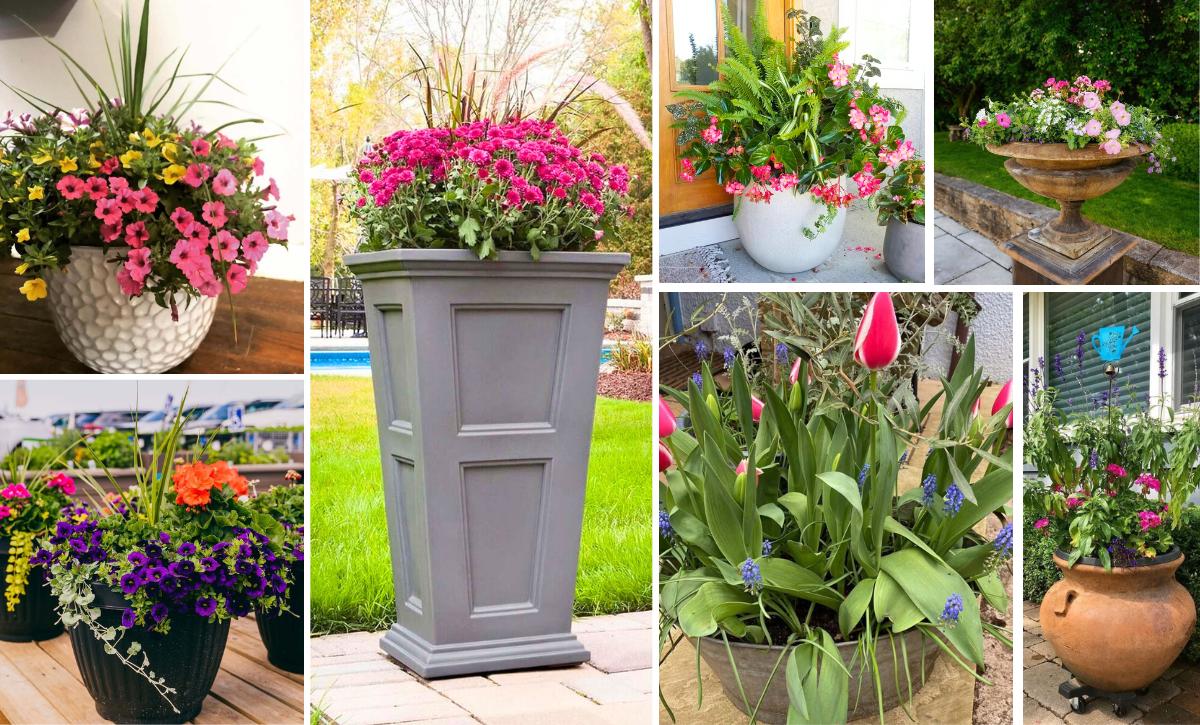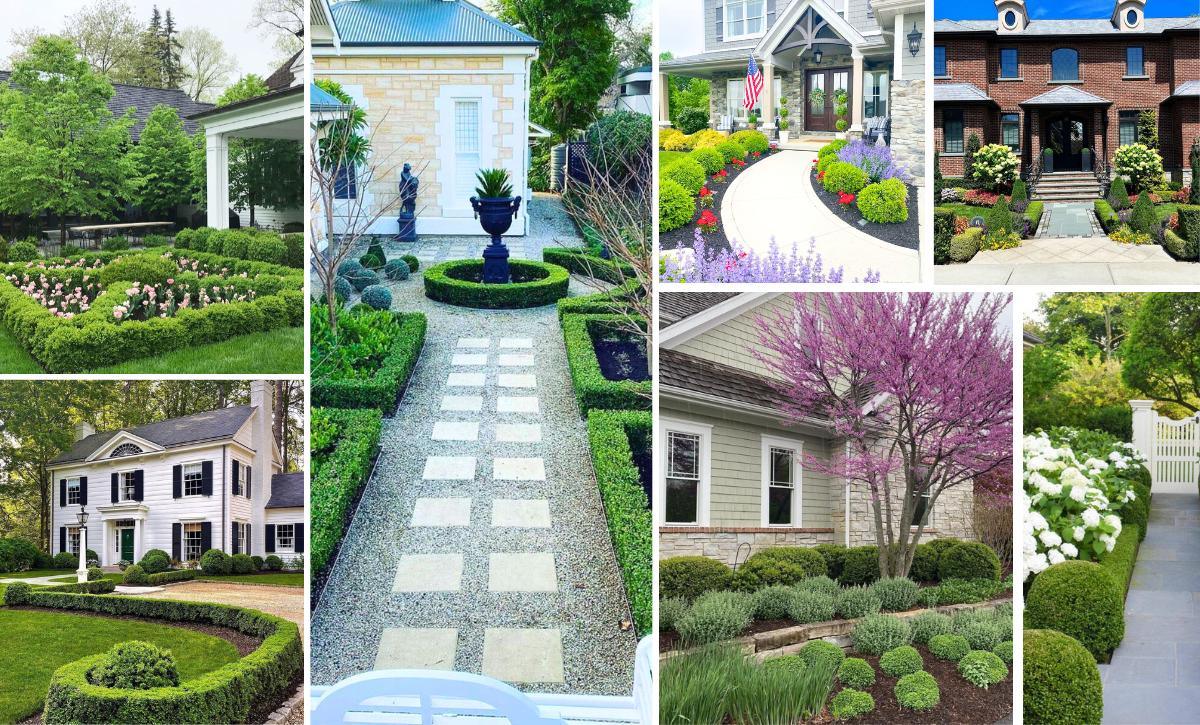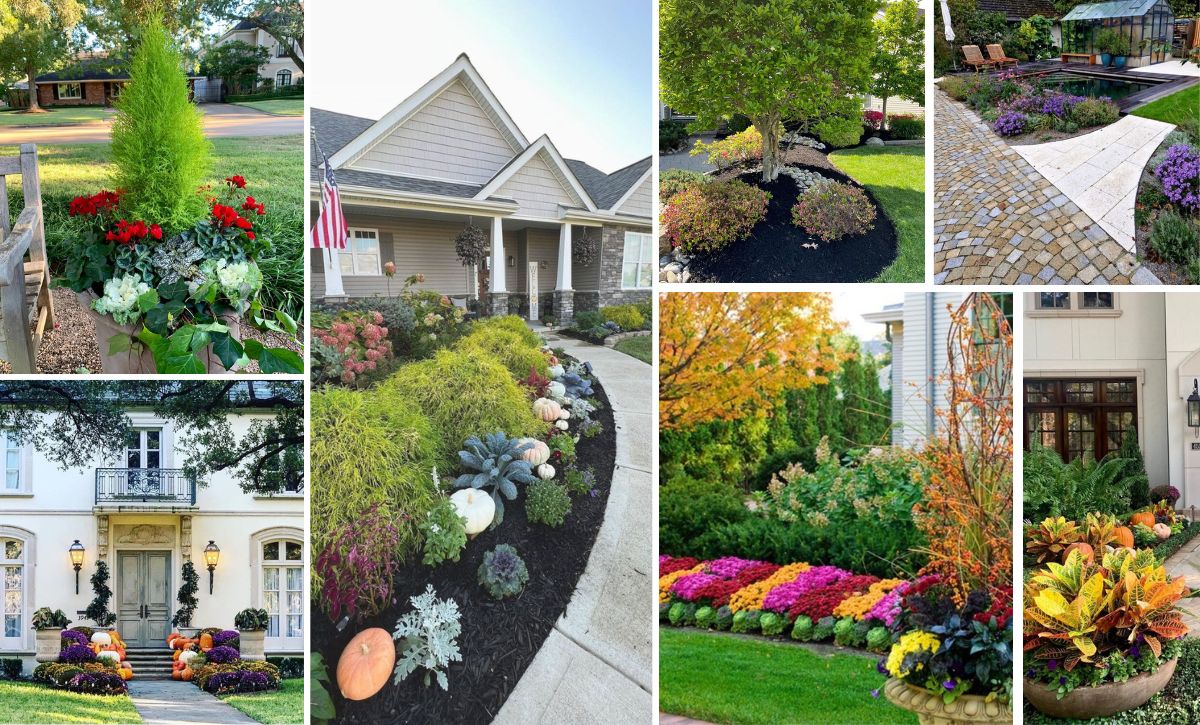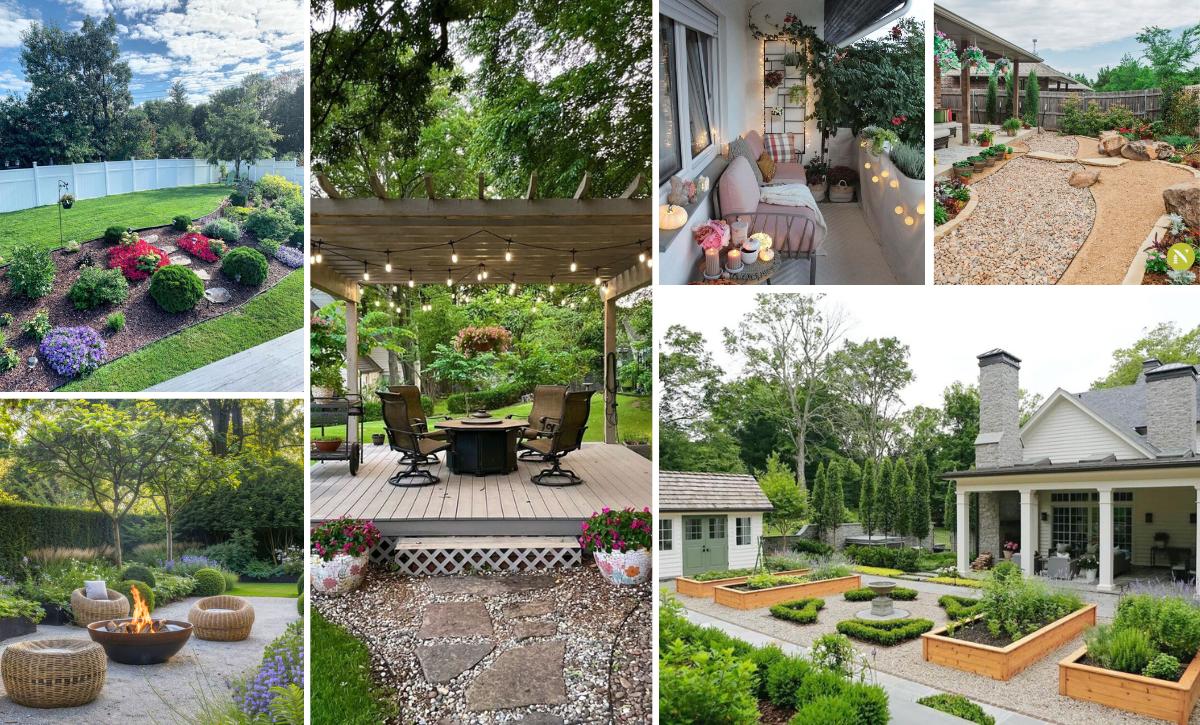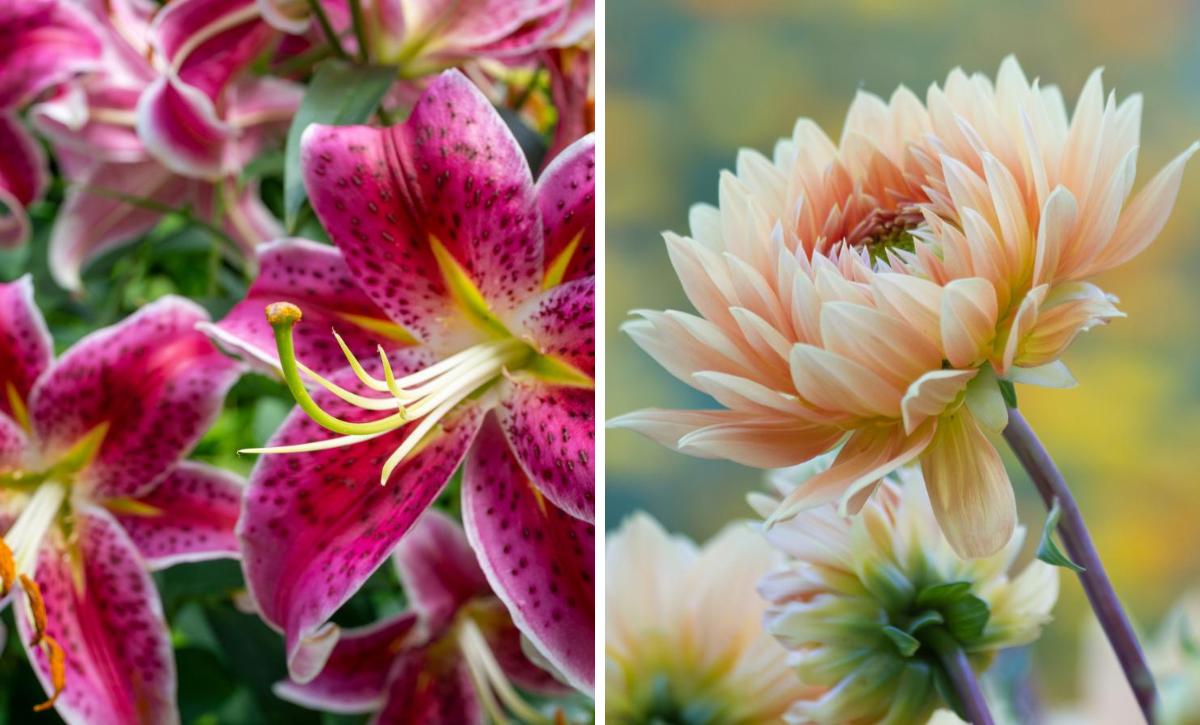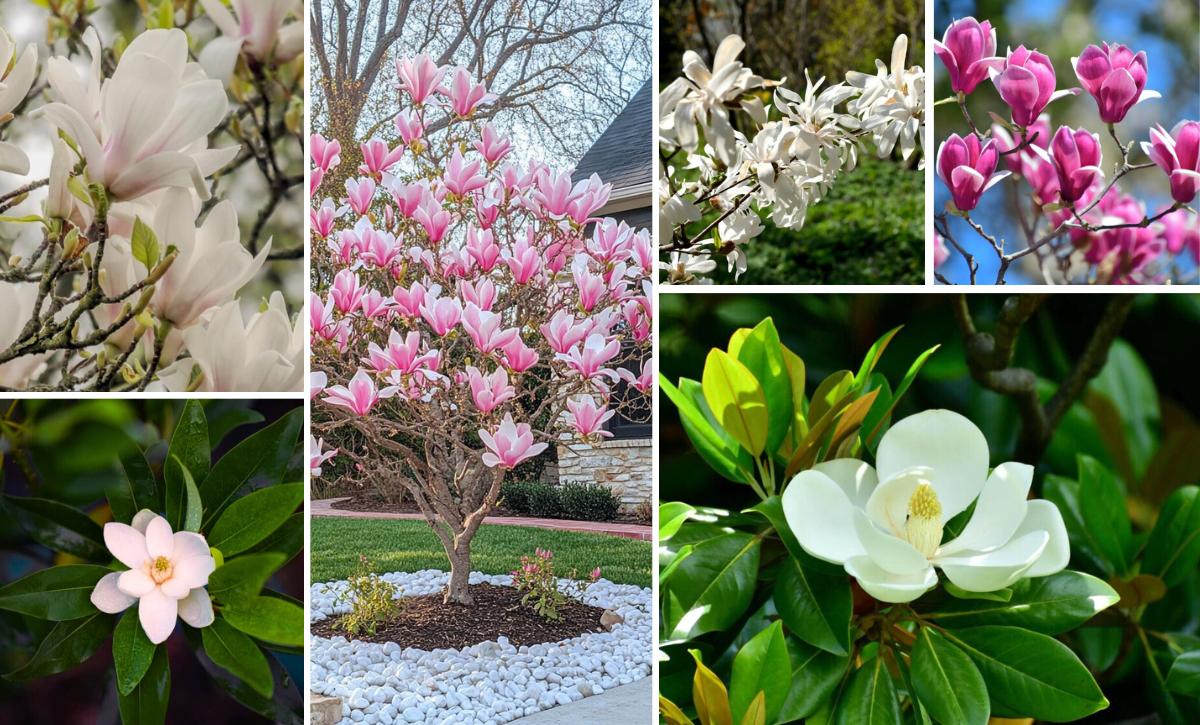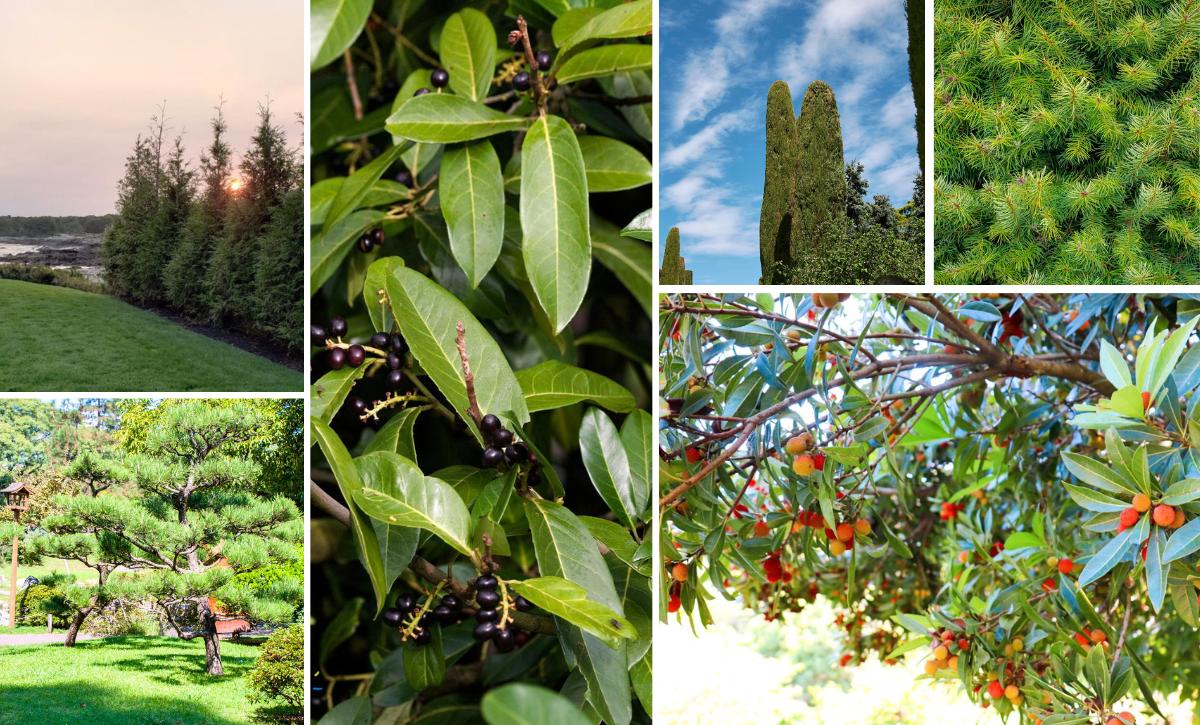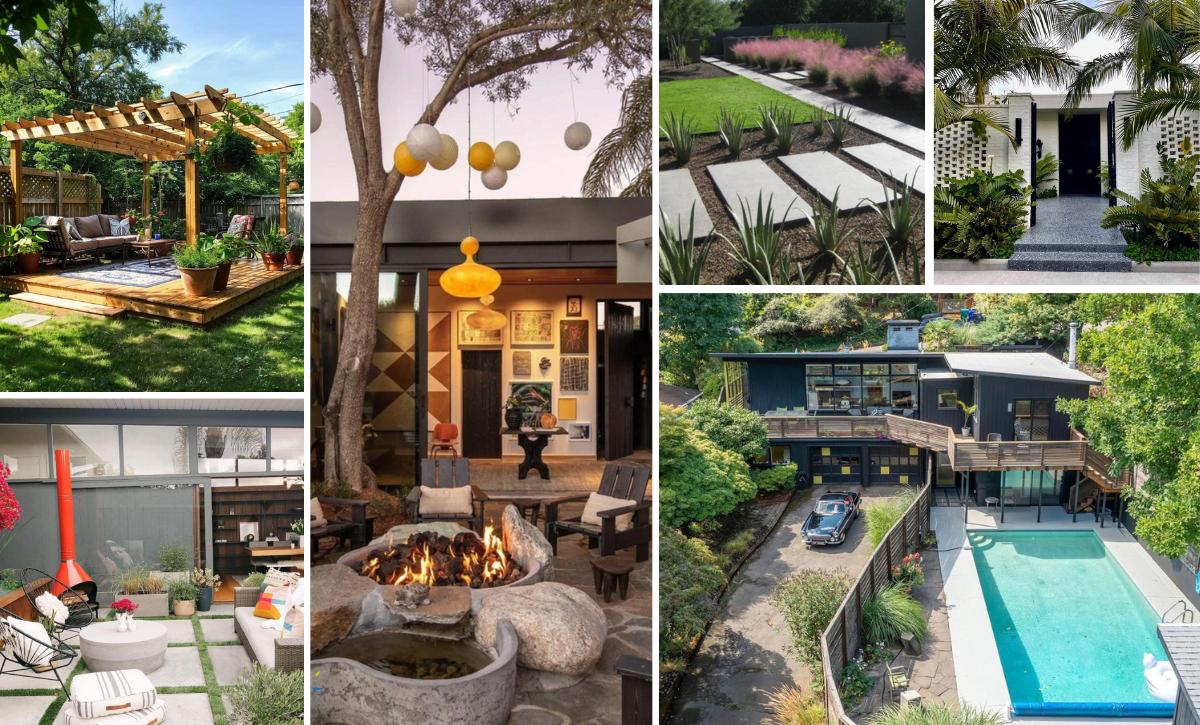Evergreens are an instrumental component of landscaping. They fill up empty spaces easily, and their greenery lasts all year round, so they are a permanent addition to the visual interest of the area.
Evergreens can be used to create screens and borders or to secure privacy on a large property. Moreover, these trees serve as shelter and food for birds and wildlife. From cones and berries to flowers and nectar, evergreens can make a complete ecosystem for birds and small animals.
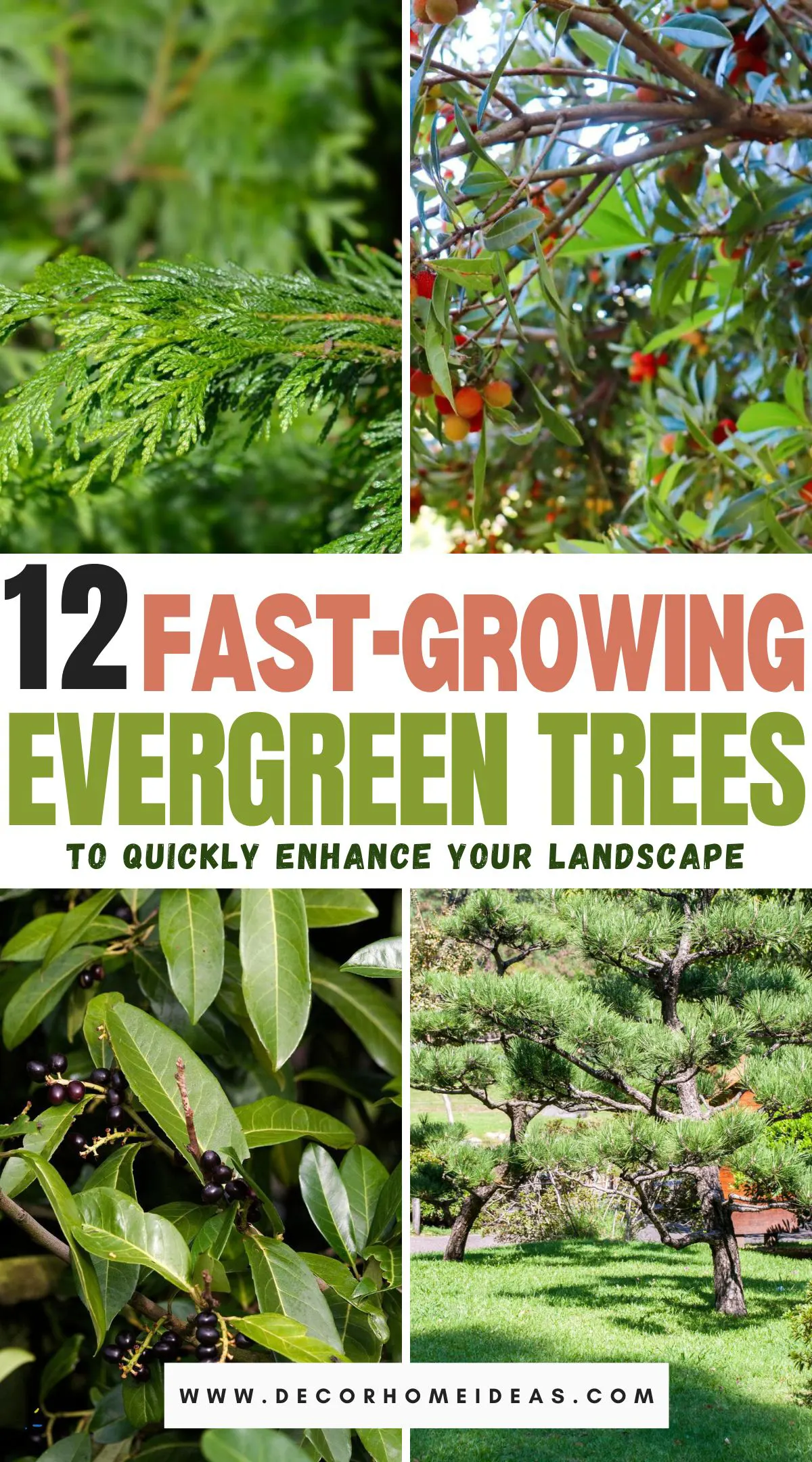
The fastest-growing evergreens will often reach the highest heights. These large trees improve the aesthetics of a home, and can also increase the property’s value. Shorter species can be grown as shrubs and used as edges.
It’s important to note that evergreen species also include slow-growing dwarf cultivars, so before choosing the ideal tree to plant, ensure you have a clear plan on how to landscape it.
Rapid-growing varieties are generally preferred for their ability to change a space’s outlook in little time. Trees with a growth rate of 25 or more inches per year can be considered fast-growing.
Here are 12 fast-growing evergreens that you can add to your property.
Take a look!
1. Nellie Stevens Holly
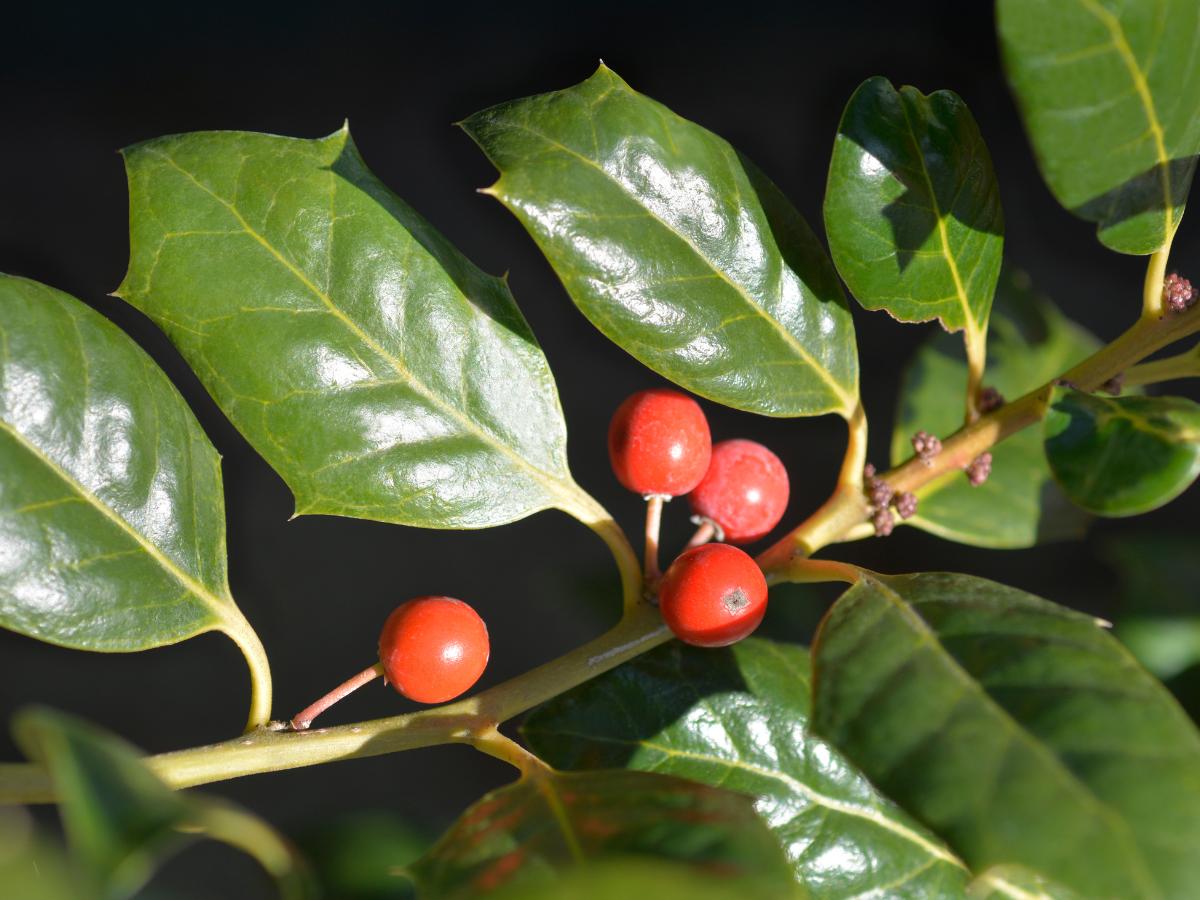
| Name: | Nelly Stevens Holly (lIex x ‘Nellie R. Stevens’) |
| Growth rate: | About 3 feet per year |
| Mature height: | 15 to 30 feet |
| Hardiness zone: | 6 to 9 |
Even though it’s often grown as a shrub edge, the Nellie Stevens Holly can work well when used as a small tree. It’s one of the few broadleaf evergreens with a rapid growth rate averaging about 3 feet per year.
The tree features broad, dark green, glossy leaves and produces red berries that add to its beauty. Since it’s salt tolerant, the Nellie Stevens Holly can thrive in coastal areas. However, it’s essential to be cautious when growing the plant, as its berries can be toxic to animals and people.
2. Italian Cypress
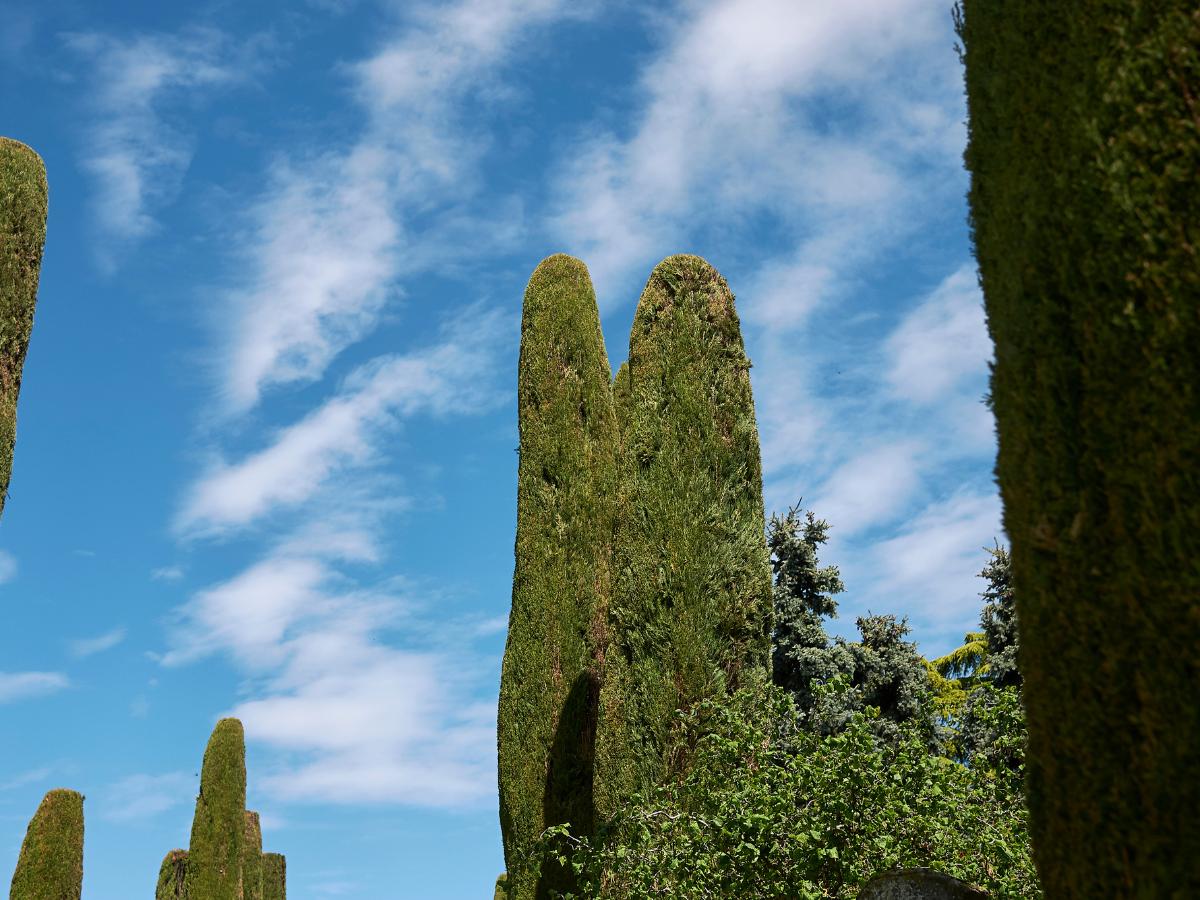
| Name: | Italian Cypress (Cupressus sempervirens) |
| Growth rate: | Up to 3 feet per year |
| Mature height: | 50 feet |
| Hardiness zone: | 7 to 10 |
The Italian cypress is a sight to behold. Its tall, narrow, cylindrical shape brings a touch of elegance and sophistication to any outdoor space. For this reason, the tree has been widely used in many landscaping designs and gardens worldwide.
The tree, which is native to the Mediterranean region, features upright branches that are adorned by sprays of dark gray-green needles. Mature trees produce cones ranging from brown to copper in color.
Its growth rate is relatively fast, growing 35 to 40 feet in 10 years. However, the plant can be pruned and shaped appropriately to maintain less height.
3. Japanese Black Pine
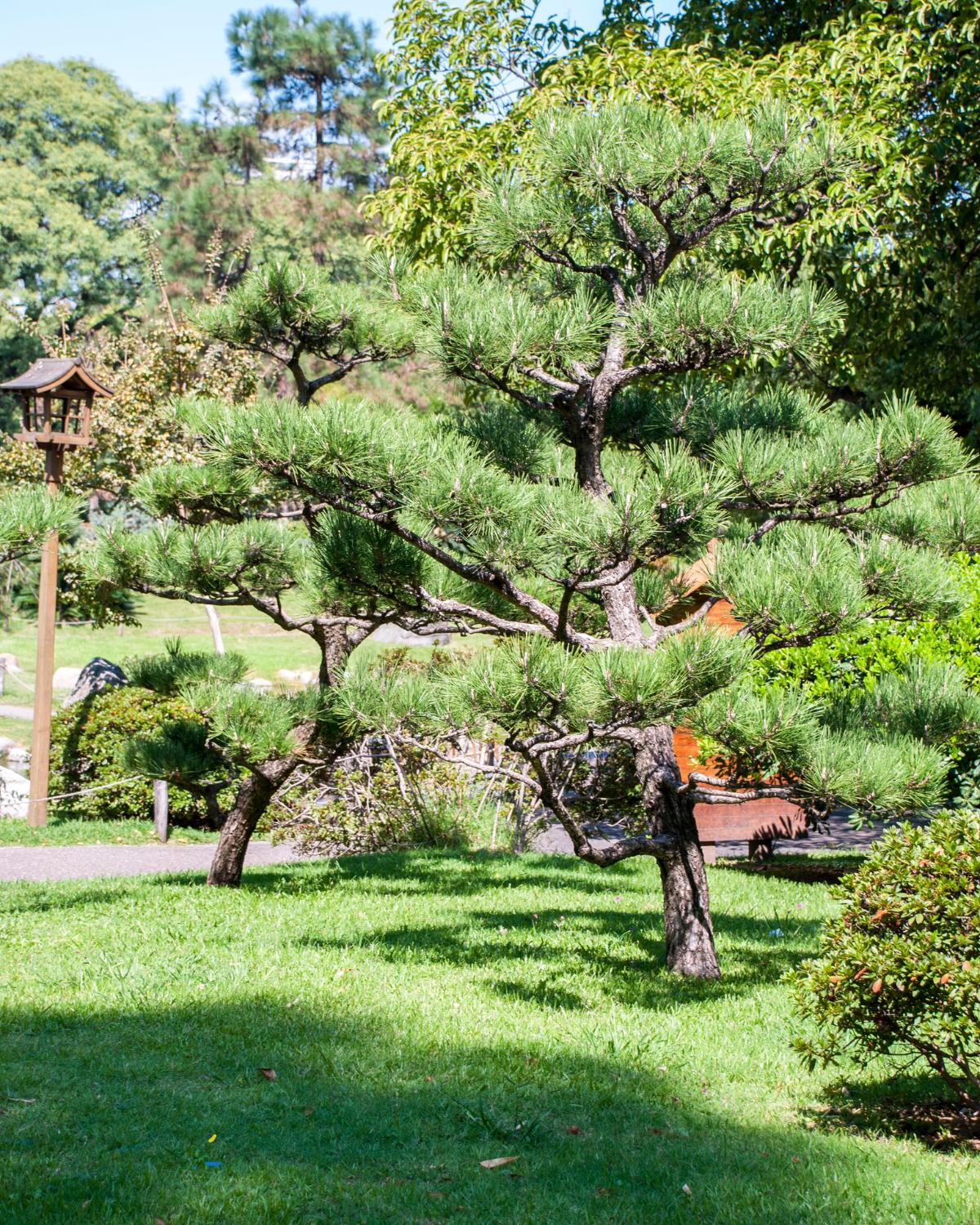
| Name: | Japanese Black Pine (Pinus thunbergii) |
| Growth rate: | 2 to 3 feet per year |
| Mature height: | 3 to 80 feet |
| Hardiness zone: | 5 to 8 |
One of the unique evergreens in this list, the Japanese black pine is valued for its unique twisting trunk and dark green foliage that can instantly increase the visual interest of space. Another unique aspect of this tree is its foliage, which emerges as white but gradually turns green.
Unlike other evergreens with tapering points, this tree has branches that droop slightly and a flat crown that’s slightly rounded. There are many cultivar varieties of this tree; for those who prefer indoor plants, you can even grow it as bonsai.
4. Thuja Green Giant
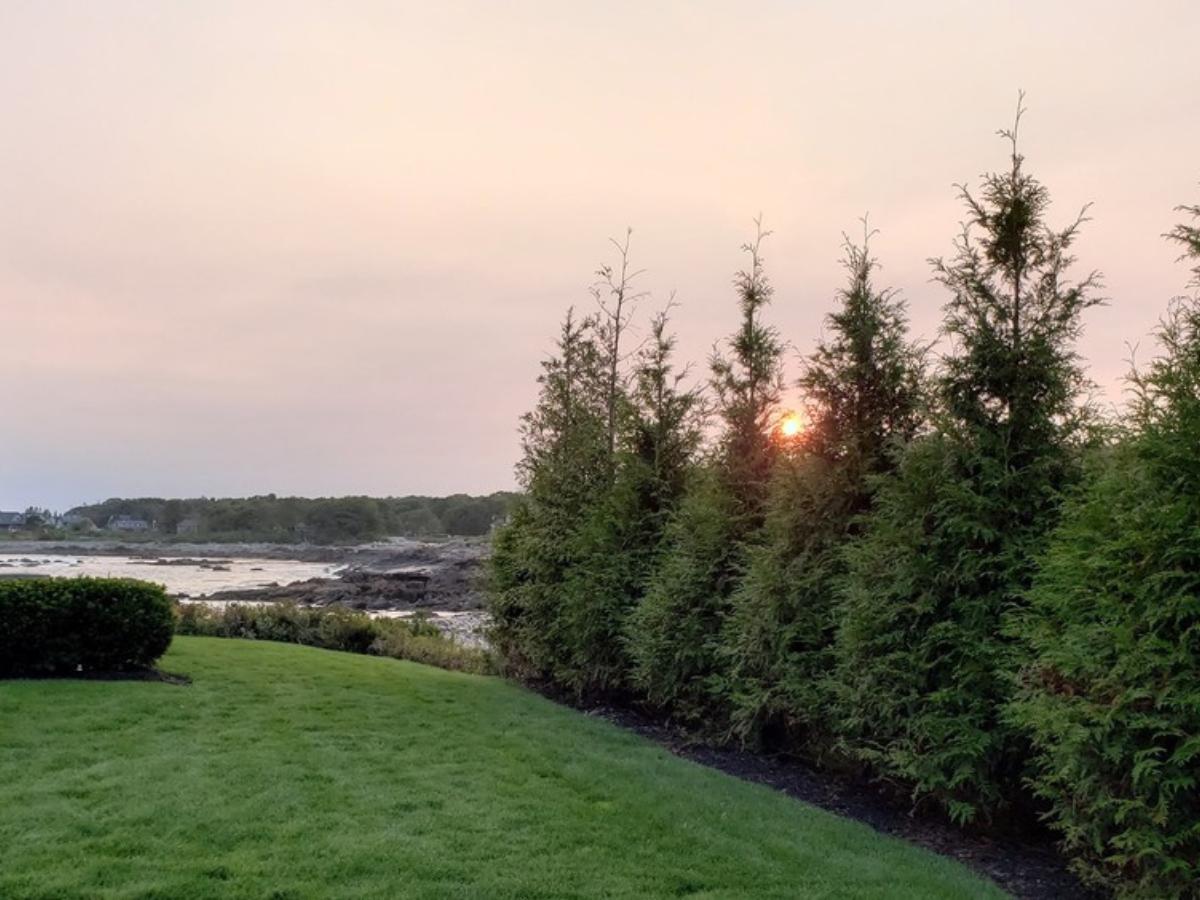
| Name: | Thuja Green Giant (Thuja standishii x plicata ’Green Giant’) |
| Growth rate: | 3 to 5 feet per year |
| Mature height: | 40 to 60 feet |
| Hardiness zone: | 5 to 8 |
As one of the fastest-growing trees, it’s no surprise that this evergreen goes by the name of Thuja green giant! A mature tree can grow to about 50 feet with a 5-foot spread in 10 years. Its dense, narrow growth habit makes it easy to use as a screen or barrier.
The Thuja green giant features brown shaggy barks with fan-like spreads of rich green foliage that get darker in winter.
Even though it can add immense beauty to your landscape, exercising caution when growing this plant is essential, especially if you have livestock or pets around, as it can be toxic.
5. Western Red Cedar
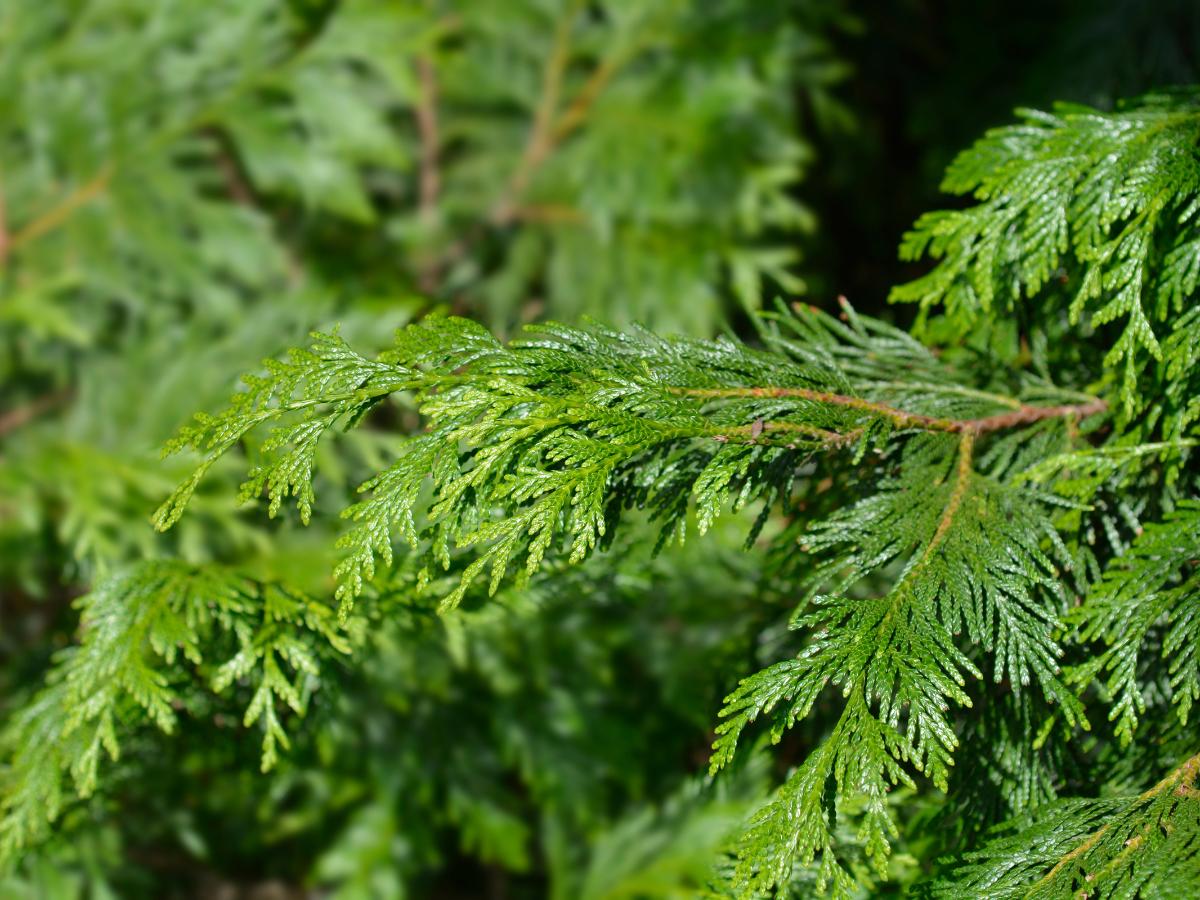
| Name: | Western Red Cedar (Thuja plicata) |
| Growth rate: | 2 feet per year |
| Mature height: | 50 to 70 feet |
| Hardiness zone: | 5 to 7 |
While its name can be misleading, Western Red Cedar is a perfect conifer to grow if you have limited space. The tree has fragrant green foliage that develops distinct white butterfly markings on the undersides of the leaves.
Its narrow to broad pyramidal shape gives a beautiful, graceful appearance and makes it ideal for small spaces. The tree blooms in the autumn, producing brown to copper-colored cones.
The Western Red Cedar is fairly short, growing to about 12 feet in 10 years.
6. Leyland Cypress
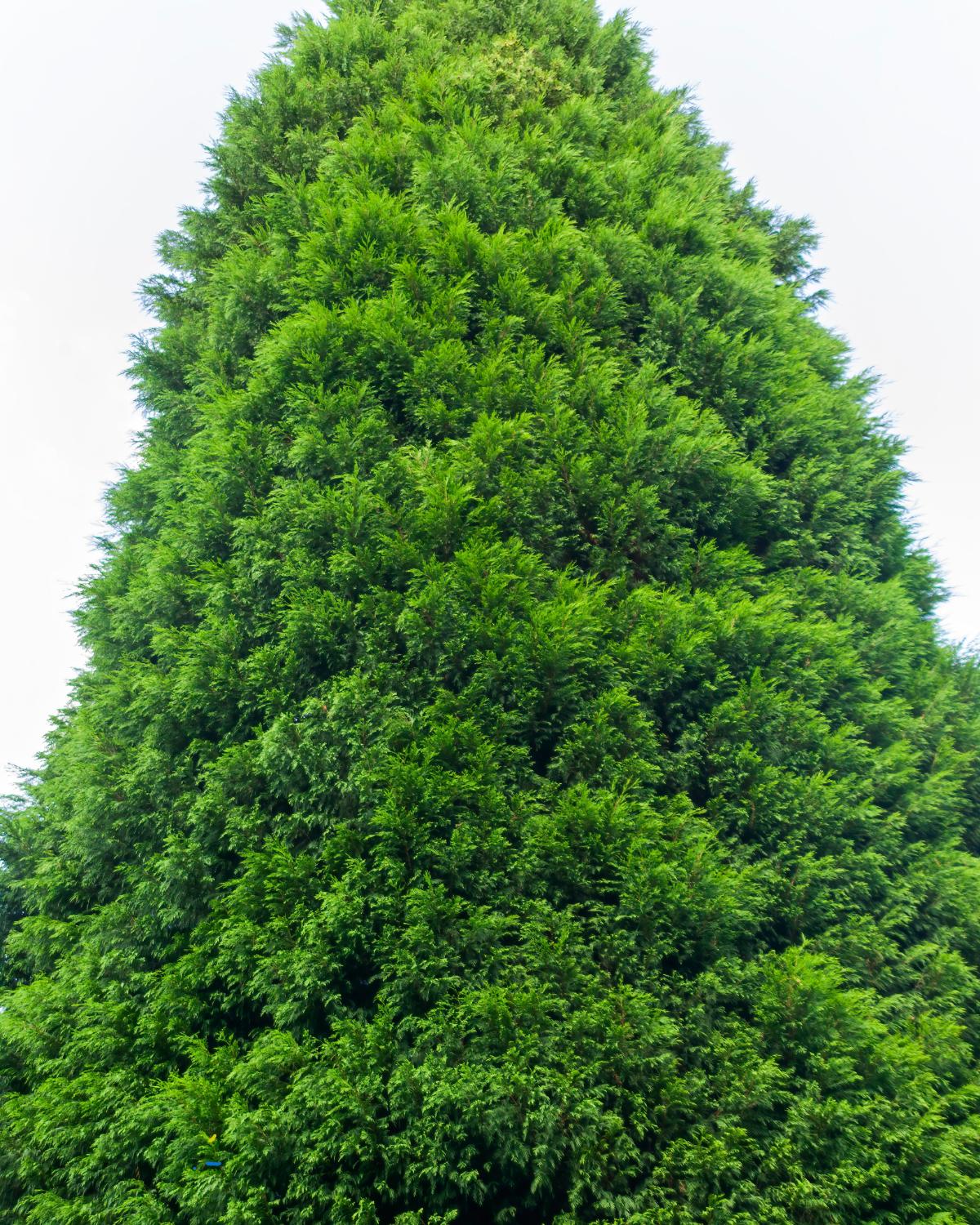
| Name: | Leyland Cypress (Cuprocyparis leylandii) |
| Growth rate: | 3 to 4 feet per year |
| Mature height: | 60 to 70 feet |
| Hardiness zone: | 6 to 10 |
This coniferous evergreen native to North America and the United Kingdom is a versatile option that can fit many landscape designs. This tree will add enough visual interest to your outdoor area with its evergreen foliage, reddish-brown bark, and brown cones.
The Leyland Cypress is broadly rounded with a pyramidal shape tapering to a point at the crown. The plant can be grown to full height or pruned and shaped as a smaller specimen tree or used as a hedge. Leyland Cypress has a slow growth rate of 20 to 30 feet in the first ten years.
7. Norway Spruce
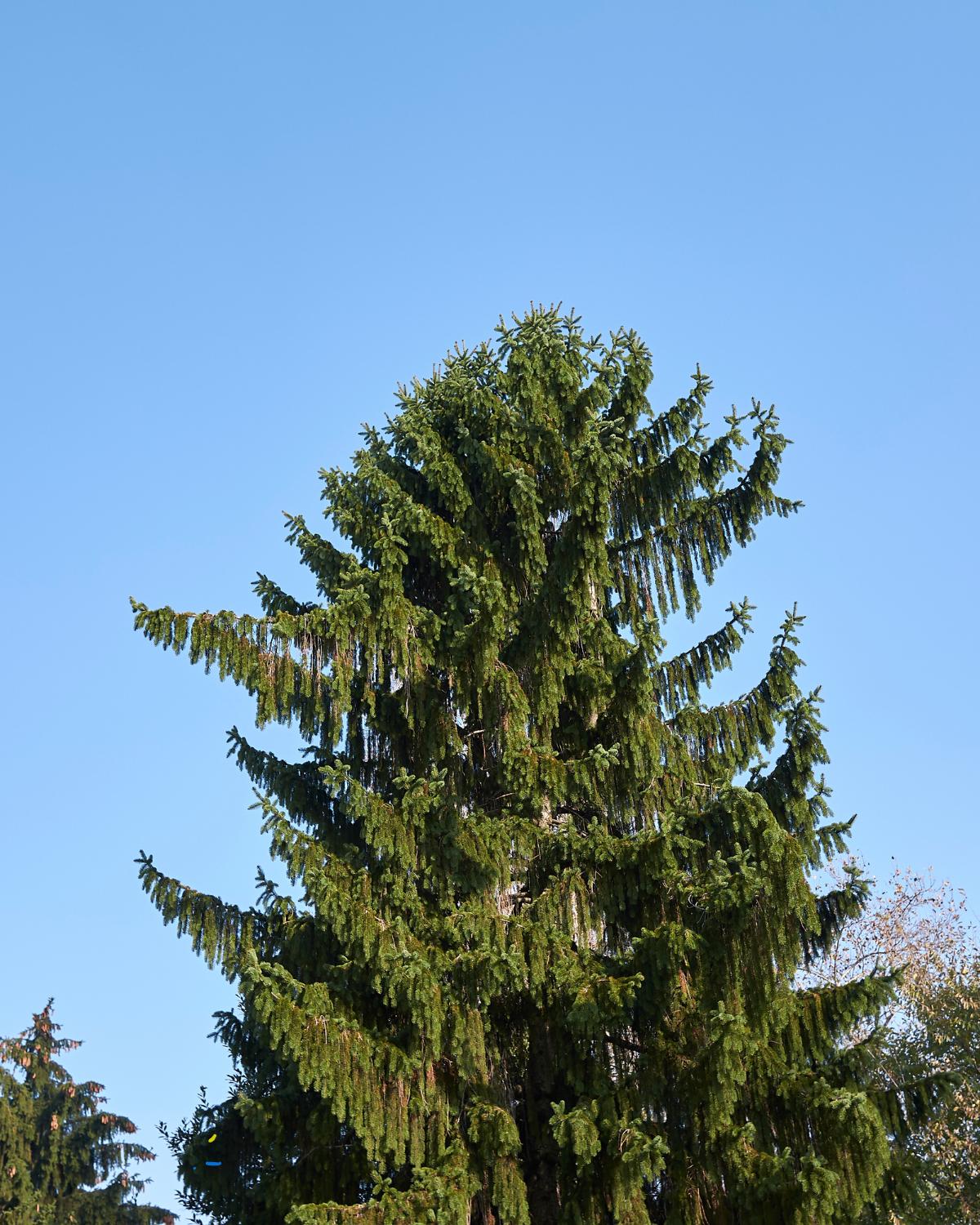
| Name: | Norway Spruce (Picea abies) |
| Growth rate: | 3 feet per year |
| Mature height: | 50 to 75 feet |
| Hardiness zone: | 2 to 7 |
One of the most iconic coniferous evergreens often used as a Christmas tree, the Norway Spruce produces large cones of about 4 to 6 inches that dangle from its unique weeping horizontal branches.
This tree features a brown-gray scaly bark. However, what makes it ideal for the festive season is its stiff, dense, dark green needles that can easily hold lights and ornaments. Norway spruce can grow to about 10 feet in its first five years.
8. Monterey Pine
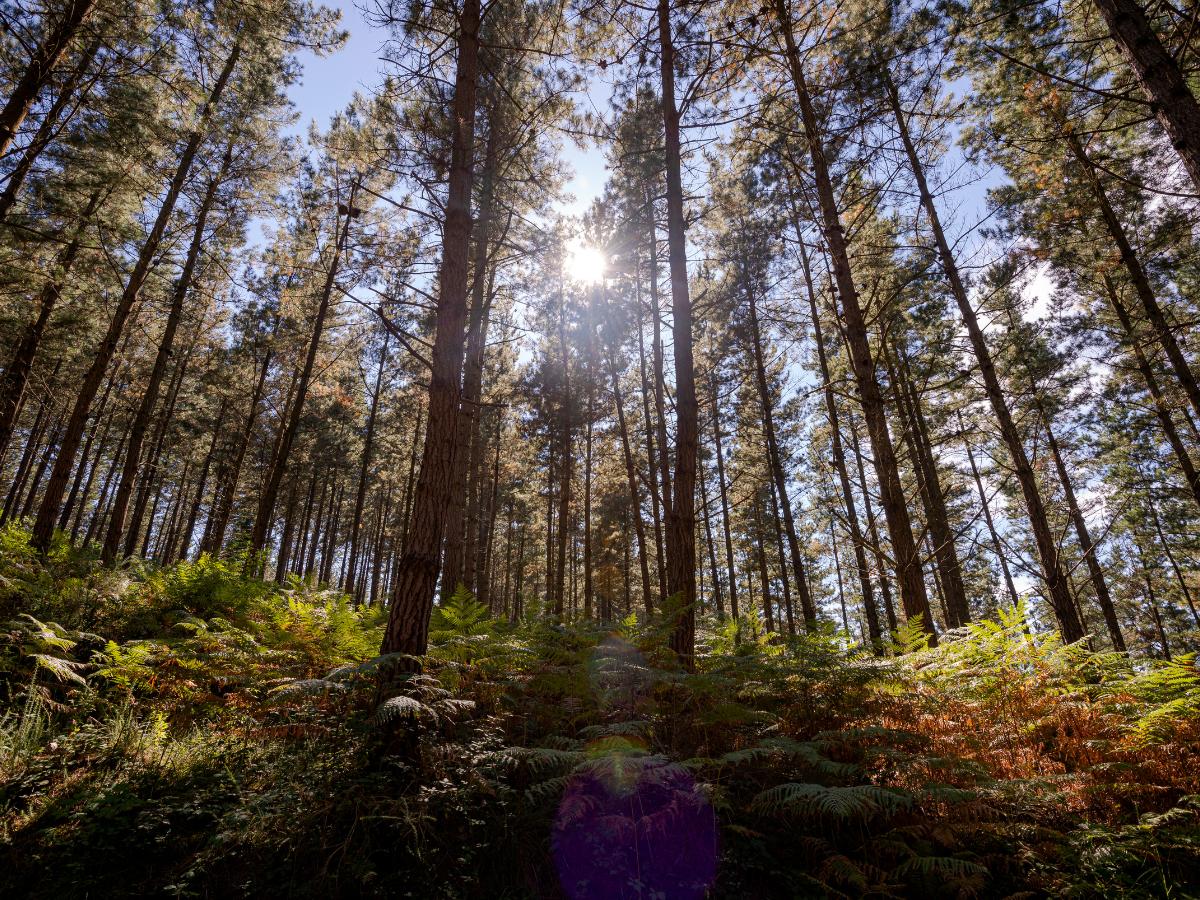
| Name: | Monterey Pine (Pinus radiata) |
| Growth rate: | 3 to 6 feet per year |
| Mature height: | 45 to 190 feet |
| Hardiness zone: | 7 to 10 |
If you are looking for a tree that will dwarf other elements in the surroundings with height while adding beauty to your landscape, then the Monterey pine is the choice for you. With a narrow trunk and pyramidal shape, this plant is perfect for landscaping.
Monterey pine thrives in dry conditions; hence, it won’t need frequent watering, especially when it matures.
The tree features dark green needles and brown seed cones and grows to about 53 feet in 15 years. The tree is primarily cultivated for lumber in many areas around the world. In some native environments, such as Mexico and parts of central California, the tree is considered an endangered species.
9. Wax Myrtle
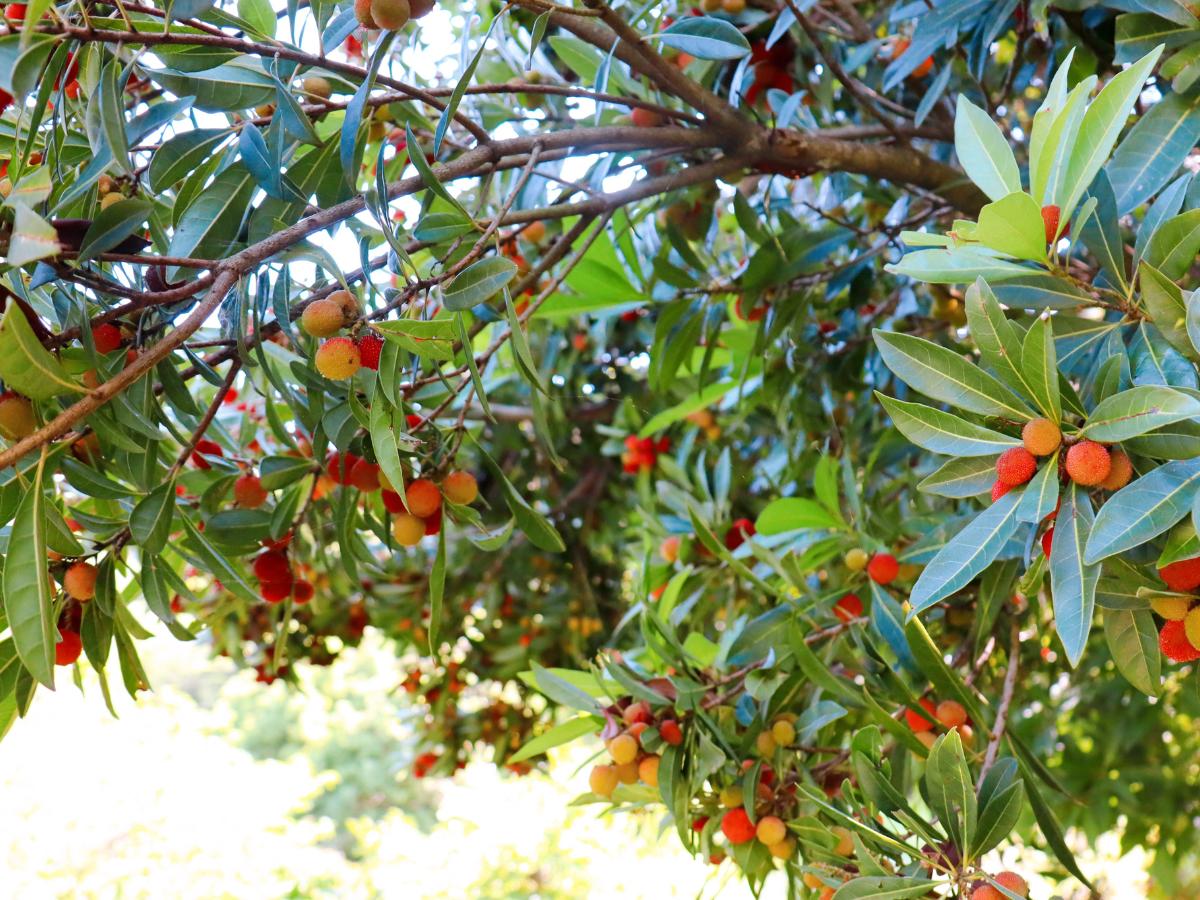
| Name: | Wax Myrtle (Morella cerifera) |
| Growth rate: | 3 to 5 feet per year |
| Mature height: | 12 to 40 feet |
| Hardiness zone: | 7 to 10 |
Commonly known as the southern bayberry tree, the wax myrtle is a fast-growing evergreen that can reach 40 feet in height. Its dense, fragrant olive-green foliage makes it well-suited for use as a border or screening hedge.
This plant blooms in the spring to produce catkins, which are followed by pale blue fruits in the winter. However, two plants, a male and a female, are required for the plant to produce berries. The bark color may vary from light gray to nearly white.
10. Rocky Mountain Juniper Skyrocket
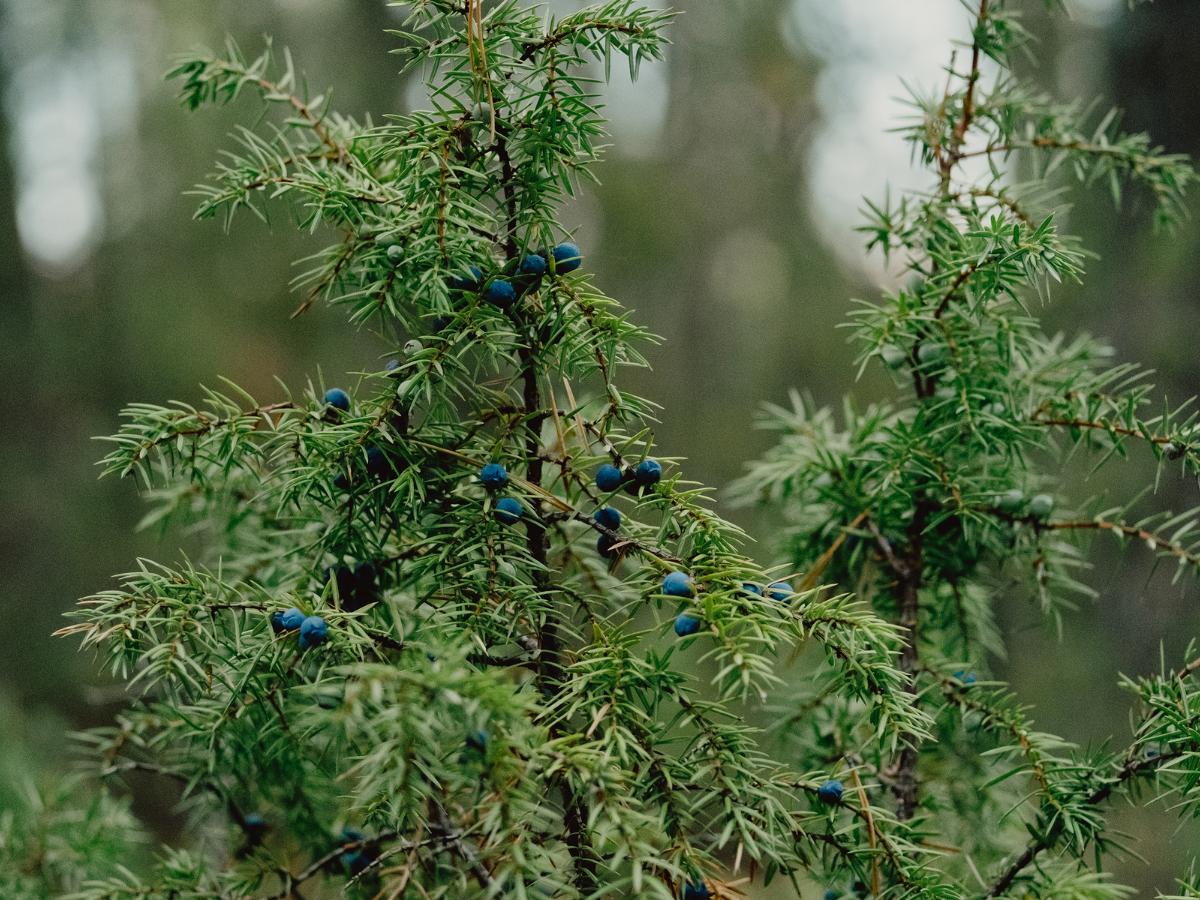
| Name: | Rocky Mountain Juniper (Juniperus scopulorum ‘Skyrocket’) |
| Growth rate: | 2 feet per year |
| Mature height: | 30 to 40 feet |
| Hardiness zone: | 4 to 9 |
A cultivar of the Rocky Mountain juniper, the skyrocket is one of the fastest-growing cultivars of the species. This evergreen adds beauty to your landscape and is versatile so you can use it in plenty of settings.
The tree has a rounded conical shape and moderate height, hence its versatility. A silvery-blue to dark green foliage and a reddish-brown bark add to this plant’s visual interest and beauty.
One of its most notable features is the waxy, blue, berry-like cones that make this evergreen even more beautiful. The skyrocket grows to about 15 feet tall, spreading about 3 feet in 10 years.
11. Grand Fir
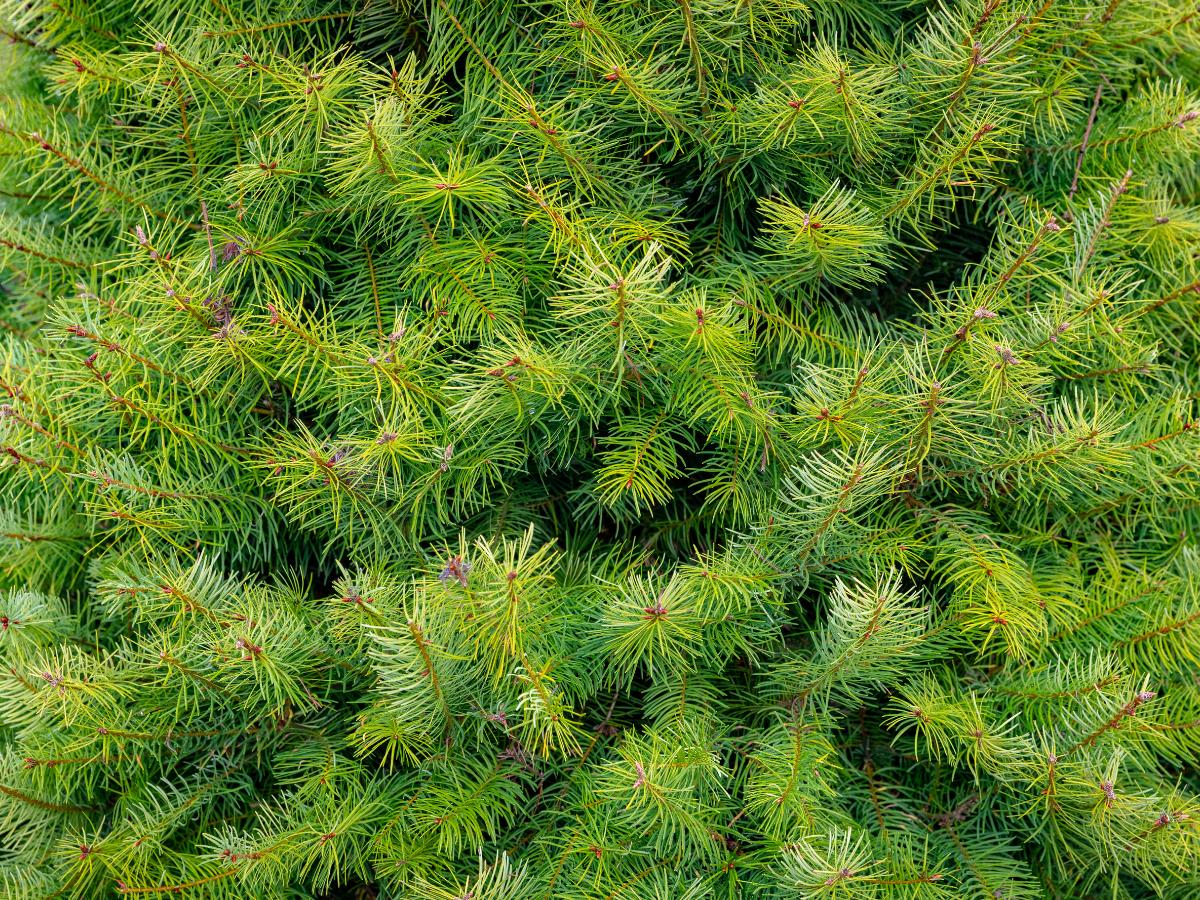
| Name: | Grand Fir (Abies grandis) |
| Hardiness zone: | 5 to 6 |
| Mature height: | 100 to 250 feet tall |
| Growth rate: | About 4 feet per year |
One of the most famous evergreens, the Grand fir, lives up to its size and appearance. This tree is an excellent focal point for any landscape, featuring smooth gray bark and shiny dark green needle-like leaves.
The Grand fir produces reddish brown cones that are about 3 inches in size. The common cultivar of this plant is the giant variety; however, there are dwarf species of the same, but they won’t grow as quickly.
12. Cherry Laurel
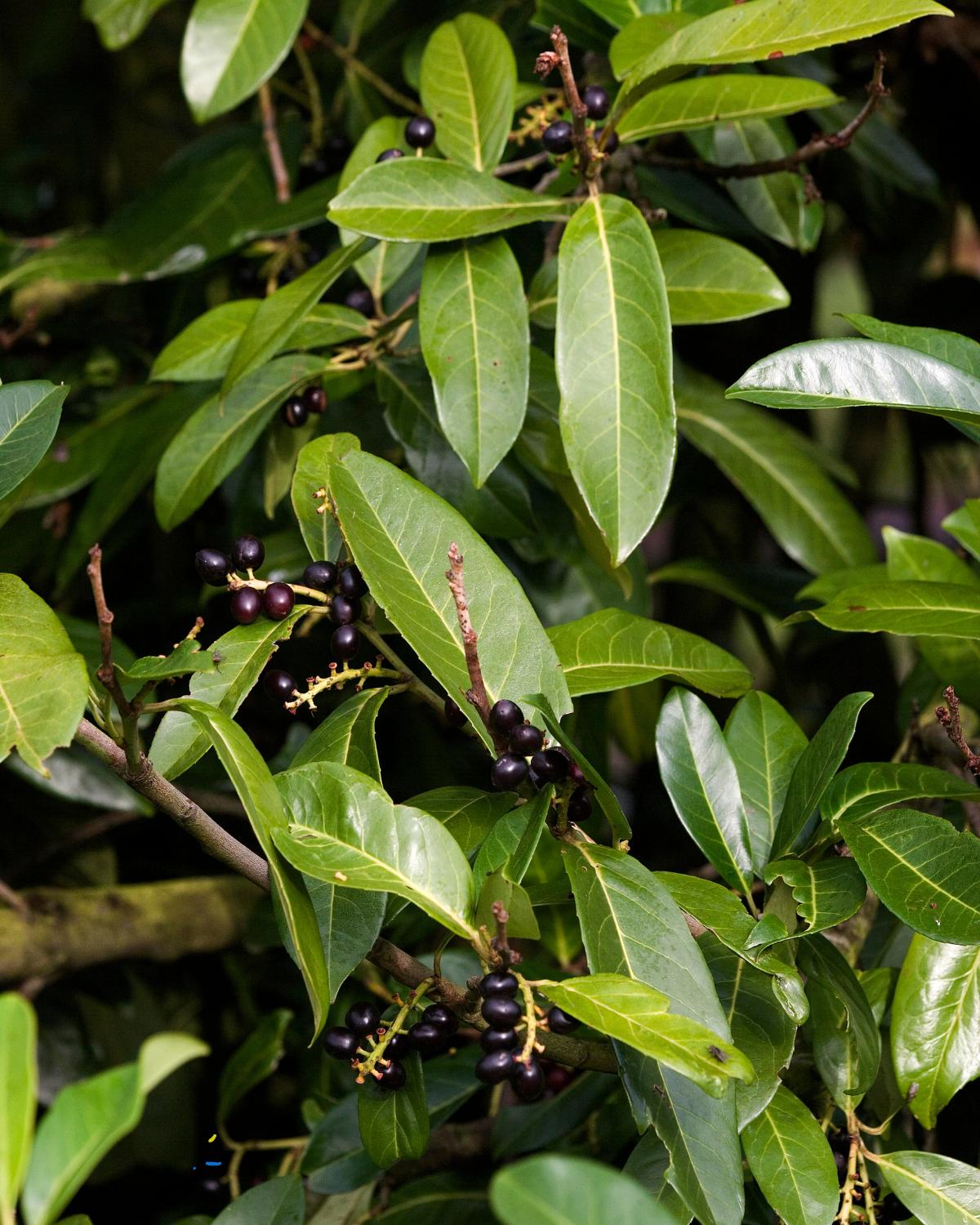
| Name: | Cheryl Laurel (Prunus laurocerasus) |
| Growth rate: | 3 to 5 feet per year |
| Mature height: | About 25 feet |
| Hardiness zone: | 4 to 9 |
Another evergreen with about the same characteristics as the wax myrtle, the cherry laurel is a broadleaf evergreen tree with glossy green foliage that may be fragrant and white flower spikes that bloom in spring.
The cherry laurel is easy to care for since it survives in various soil types and responds well to pruning, making it ideal for a screening hedge.
The plant’s combination of flowers and berries attracts birds and pollinators in autumn. With the proper care requirements, the Cheryl Laurel can grow to about 10 feet tall in four to five years. However, this plant can be toxic to people and pets, so take the necessary precautions when growing it.

